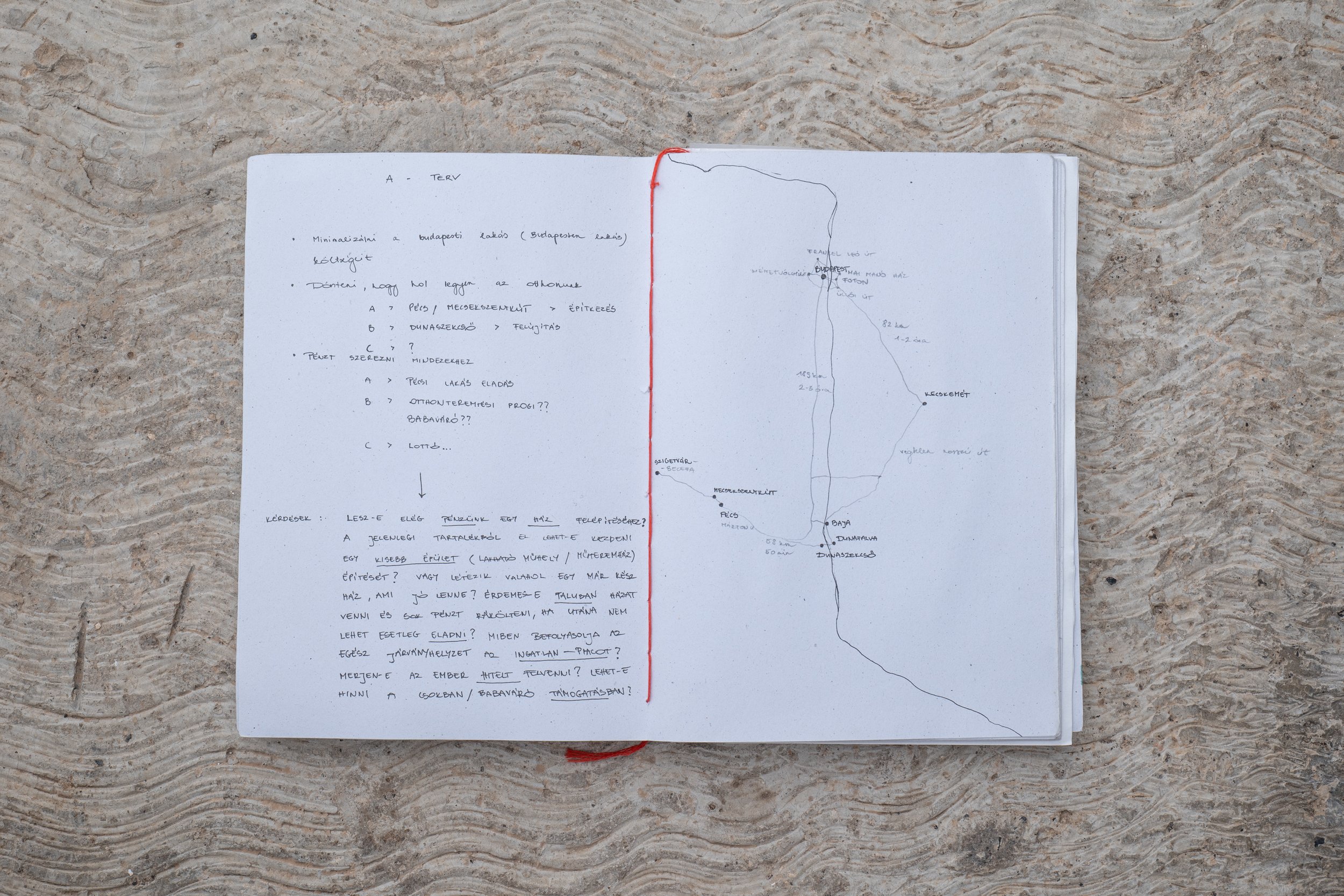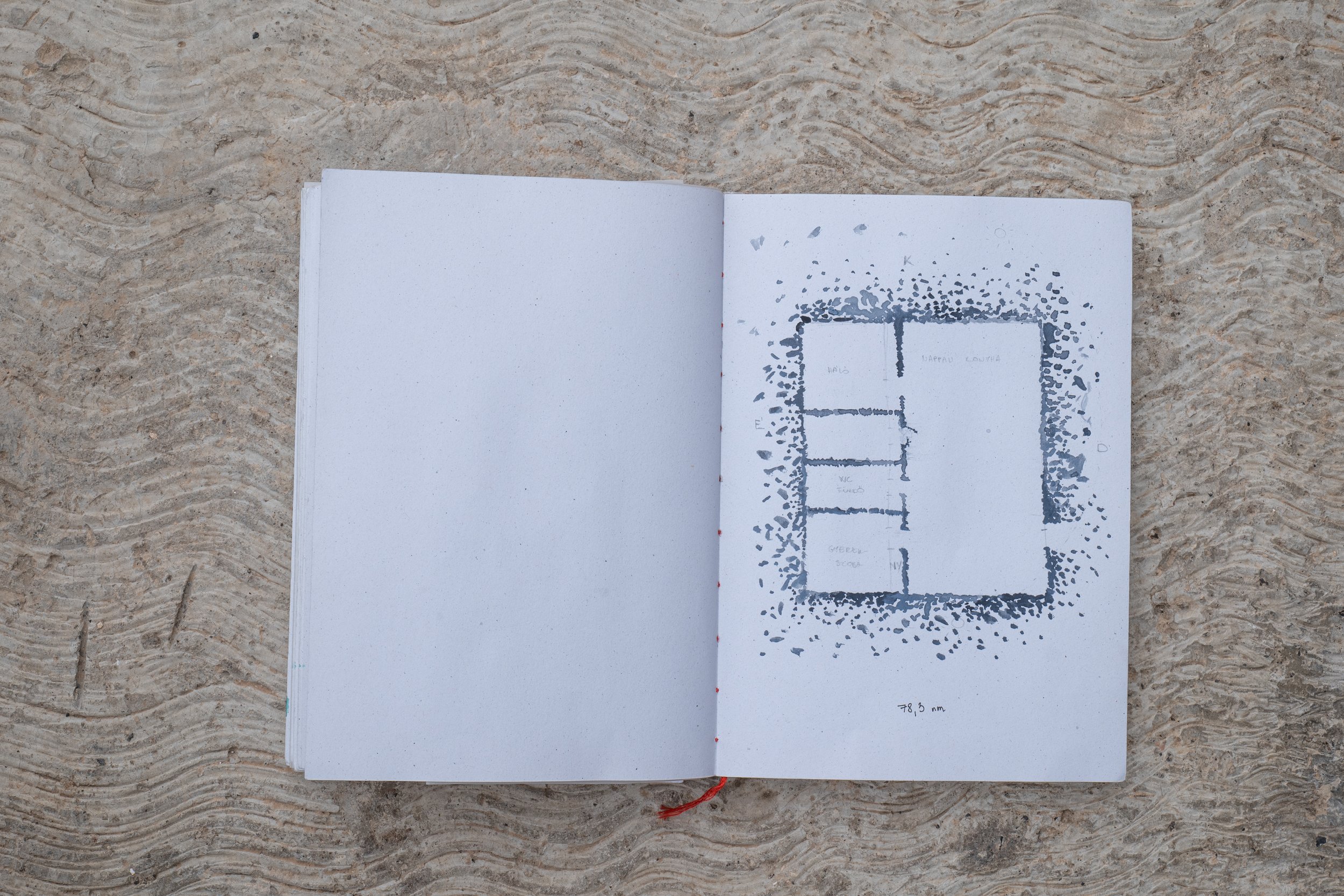

Finding the End of the Rainbow
Establishing a home is a major challenge for the vast majority of Hungarian society. Construction raw material prices have risen dramatically in recent years, labor costs are high due to labor shortages, and good tradespeople are hard to find. Property prices have almost doubled, not only in Budapest but also in the countryside. A person with an average income probably cannot get a property without a loan and subsidies. And, in many cases, the various home-creation programs only encourage this desire, but rarely provide genuine support to families in actual need. There is a housing crisis.The average Hungarian family lives on 78.3 m2. In my video work, I enclose an area of exactly this size: it is the symbolic construction
of the foundations of a fictive house. The carrying of stones is an allegory of the – even physically – difficult, exhausting
and lengthy process of establishing a home. The location and the landscape are strange and unfamiliar. Via the horizontal images of the video, we can see the seemingly Sisyphean, never-ending process and the human scale. A top-view photograph shows the created pattern, the foundation. The static nature of the medium reinforces the uncertainty that accompanies the process of creating a home. Will the house ever be built? The actual answer to this question can be
found in the Napló (Diary), the text sections of which tell the story of one year’s events: the progress of home creation,
the problems and their possible solutions. The accompanying drawings, watercolors and photographs, on the other hand, are imprints of planning and dreaming. The diary is my personal history.
/ Translation from Archive of the Pécsi József Photography Grand /
Enterior in Capa Center, Project Room, Pécsi József Photography Grant 2021 exhibition, 2022 /











































































>>> 78.3 / 4K video, 30’15”, video: Krisztián Pamuki

>>> 78.3 / giclée print in wooden frame, 135x108 cm, 5+ap

>>> Enterior in Capa Center, Project Room, Pécsi József Photography Grant 2021 exhibition, Budapest, 2022